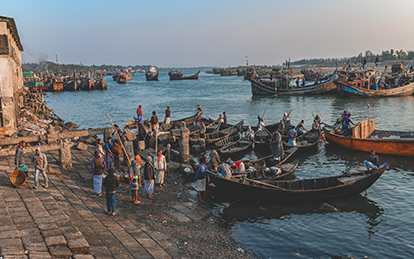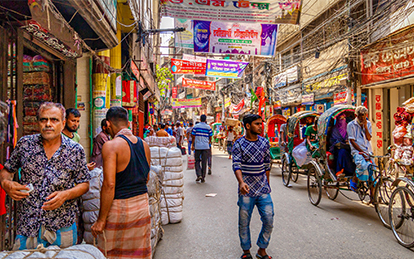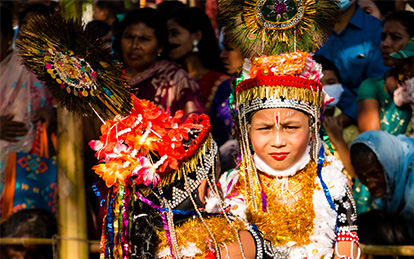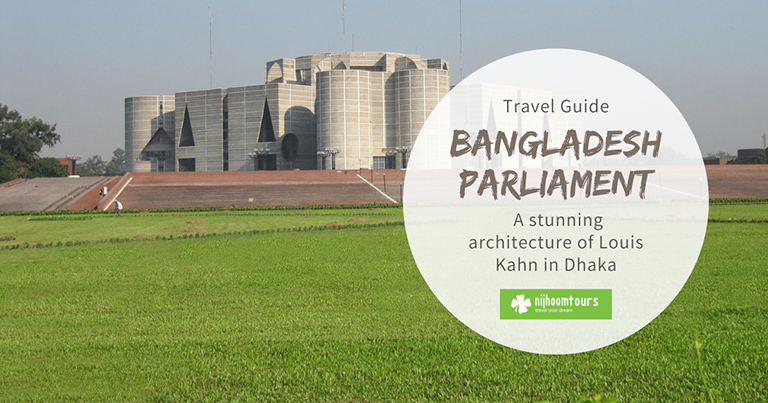
The Bangladesh National Assembly Building, commonly known as the Jatiyo Sangshad Bhaban, is a magnificent architectural masterpiece in Bangladesh’s capital Dhaka. This iconic building is the official seat of the Parliament of Bangladesh and a symbol of the country’s democracy and sovereignty. Built in the 1980s, the building is considered one of the most unique and beautiful parliament buildings in the world.
Winning several international awards for its architecture, Bangladesh National Assembly Building is on our list of must-visiting places in Dhaka. If you are visiting Bangladesh, paying a visit to this building is something you should not miss.
Designer of Bangladesh National Assembly Building
The Bangladesh National Assembly Building was designed by the renowned American architect Louis I. Kahn, who was commissioned to create the building in 1961. However, the construction of the building began in 1964 and was completed in 1982, two years after Kahn’s death. The building was inaugurated on February 28, 1982, by the then-President of Bangladesh, Hussain Muhammad Ershad.
You can watch the documentary “My Architect” about the son of Louis Kahn discovering his father through this work. His crowning achievement was the Bangladesh National Assembly Building in Dhaka. It will enrich your experience immensely because you will come with a much more full understanding of Louis Kahn, his eccentric life, and his many other buildings around the rest of the world.
Construction of Bangladesh National Assembly Building
Bangladesh National Assembly Building was constructed between 1961 and 1982. The construction of the building began in 1961 when the government of East Pakistan (now Bangladesh) commissioned the renowned American architect Louis I. Kahn to design the building. Kahn visited Dhaka in 1962 and 1964 to study the site and understand the local context and culture.
However, the construction of the building faced several delays due to political instability and economic challenges in the country. It was also difficult to find suitable materials and skilled labor for the construction of such a massive and complex building. In addition, the project faced several design challenges, particularly in the construction of the building’s large circular chamber, which required innovative structural solutions.
Despite these challenges, the construction of the Bangladesh National Assembly Building continued, albeit at a slow pace. Kahn passed away in 1974 before the building was completed, but his associates and local architects continued to work on the project according to his vision. The building was finally completed in 1982 and inaugurated on February 28, 1982, by the then-President of Bangladesh, Hussain Muhammad Ershad.
The construction of the Bangladesh National Assembly Building was a massive undertaking, given the country’s limited resources and infrastructure at that time. However, the building’s completion was a significant achievement for the country and a testament to its determination to undertake ambitious projects and achieve its goals. Today, the building is an iconic symbol of Bangladesh’s democracy and sovereignty and a popular tourist attraction.
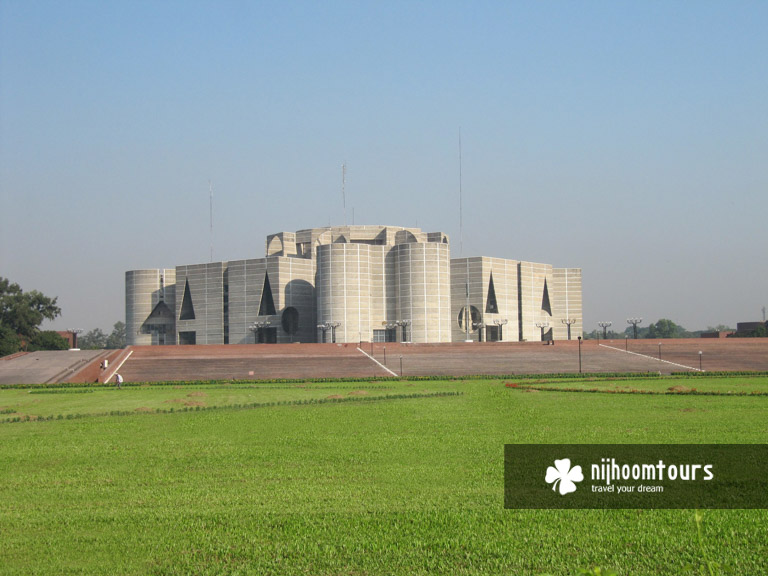
A front view of Bangladesh Parliament Building in Dhaka. © Photo Credit: Kawe Safavi-Bayet.
Architecture and Design of Bangladesh National Assembly Building
The Bangladesh National Assembly Building is a masterpiece of modern architecture that blends traditional and modernist design principles. The building’s unique architectural style is a testament to the country’s rich cultural heritage and its aspirations for a modern, progressive future.
Architect Louis I. Kahn was inspired by the ancient ruins of South Asia and sought to create a building that would be a symbol of the country’s democracy and sovereignty. He drew upon traditional forms and techniques, such as the use of local materials and natural light, to create a design that was both contextually appropriate and visually stunning.
One of the most distinctive features of the Bangladesh National Assembly Building is its massive circular chamber. The chamber is supported by eight massive pillars, each weighing more than 500 tons, which rise up from a reflecting pool. The circular shape of the chamber was inspired by the Buddhist stupa, which is a traditional form of South Asian architecture. The chamber is surrounded by offices and committee rooms, which are arranged in a linear fashion around the perimeter of the building.
The building’s use of natural light and ventilation is another key feature of its architectural style. Kahn designed the building to allow natural light to enter through large openings in the ceiling, which creates a warm and inviting atmosphere. The use of natural ventilation also helps to regulate the building’s temperature, reducing the need for air conditioning.
Another important aspect of the building’s architectural style is its use of local materials and construction techniques. Kahn used local brick and concrete to create a sense of continuity with the surrounding landscape. The building’s exterior features a distinctive pattern of recessed and projecting rectangles, which creates a textured effect that is both visually striking and functional, helping to regulate the building’s temperature.
In addition to its architectural style, the Bangladesh National Assembly Building is also notable for its sustainable design features. The building’s use of natural light and ventilation, as well as its incorporation of local materials, helps to reduce its environmental impact. The building also has a rainwater harvesting system, which collects and recycles rainwater for use in irrigation and other non-potable applications.
Important Sections of the Building
The Bangladesh National Assembly Building is a complex structure with several important sections. Here are some of the most significant sections of the building:
- Plenary Hall: The Plenary Hall is the centerpiece of the Bangladesh National Assembly Building. It is a large circular chamber that can accommodate up to 354 members of parliament. The hall is supported by eight massive pillars weighing more than 500 tons and is surrounded by offices and committee rooms.
- Prime Minister’s Office: The Prime Minister’s Office is located on the fourth floor of the building. It is a large and spacious office that provides the Prime Minister with a commanding view of the surrounding landscape. The office is decorated with traditional Bangladeshi artwork and furnishings and is a symbol of the country’s sovereignty and democracy.
- Members’ Offices: Members of parliament have individual offices in the Bangladesh National Assembly Building. These offices are located on the second and third floors of the building and provide a private workspace for each member. The offices are equipped with modern amenities such as computers, telephones, and internet access.
- Library: The Bangladesh National Assembly Building Library is a large and comprehensive collection of books and documents related to parliamentary democracy, politics, and governance. The library is located on the first floor of the building and is open to members of parliament and the public.
- Committee Rooms: The Bangladesh National Assembly Building has several committee rooms that are used for parliamentary committee meetings. These rooms are located on the first and second floors of the building and are equipped with modern audiovisual equipment.
- Dining Room: The Dining Room of the Bangladesh National Assembly Building is a large and elegant space that can accommodate up to 350 guests. It is used for official functions and receptions and is decorated with traditional Bangladeshi artwork and furnishings.
Awards Received
The Bangladesh National Assembly Building has received several prestigious awards for its architectural design and significance. Here are some of the most notable awards that the building has received:
- Aga Khan Award for Architecture: In 1989, the Bangladesh National Assembly Building was awarded the Aga Khan Award for Architecture. The award is given to projects that demonstrate excellence in contemporary design and their social, historical, and cultural context. The jury praised the building’s “intense symbolism and power,” as well as its integration of traditional and modernist design principles.
- World Architecture Festival Award: In 2009, the Bangladesh National Assembly Building won the World Architecture Festival Award in the Civic and Community category. The award is given to projects that demonstrate excellence in design and innovation. The jury praised the building’s “bold and visionary design,” as well as its “striking use of light and space.”
- AIA Twenty-Five Year Award: In 2017, the Bangladesh National Assembly Building received the AIA Twenty-Five Year Award from the American Institute of Architects. The award is given to projects that have demonstrated excellence in design and have stood the test of time. The jury praised the building’s “monumental quality” and its ability to “integrate tradition and modernity in a unique and compelling way.”
- UNESCO World Heritage Site Nomination: In 2019, the Bangladesh National Assembly Building was nominated as a UNESCO World Heritage Site. The building was recognized for its architectural significance and its role as a symbol of the country’s democracy and sovereignty.
Visiting the building
Visiting inside the Bangladesh National Assembly Building requires a special permit. You can book our Dhaka Architecture Tour to visit this magnificent building, which includes getting the permit for you. We’ll show you the important sections inside the building, outside the building, and have lunch inside the parliament cafeteria, along with visiting some of the best other contemporary architectural buildings in Bangladesh, on this tour. To see the building from just the outside, you can book our Dhaka City Tour instead.
Have you ever visited the Bangladesh National Assembly Building? How amazing have you found it? Please share your experience here with us in the comments!
Check out our 1-28 days Bangladesh tour packages and 3-8 days Sundarban Tour Packages in Bangladesh to visit Bangladesh with comfort.

